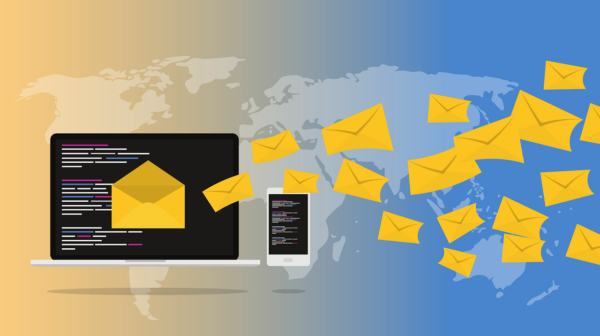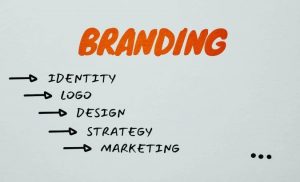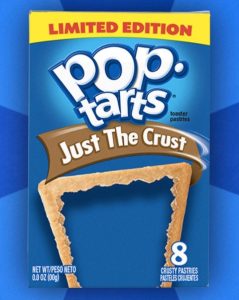Is email marketing dead?
The question often pops up every few years, and we scratch our heads to find answers. Think of the time when the first television was introduced to the world, the radio and theatre companies thought their businesses were gone for good. However, despite the boom in television purchases, users still tuned into radio at their homes or in their cars and people still went to watch plays and opera shows in the theatre.
The rise of a new innovation does not warrant an end to the older one. Keeping that in mind, as social media platforms like Facebook and LinkedIn became hotspots for running advertisements, businesses thought that email marketing was not effective anymore. That was simply not true.
The Rise and Fall of Email Marketing
Let us take a step back and get a sneak peek into the genesis of email marketing. Long ago, when the internet became a fresh and new thing, businesses saw a huge potential in email marketing and joined the bandwagon of promoting their goods and services through emails. The idea proved fruitful and funneled many sales and increased brand exposure.

Photo credit: ribkhan / Pixabay
Over a period of time, consumers got sick of tons of unwanted emails landing into their inboxes all the time. Businesses realized that the sector had become too saturated with everyone using the same techniques. As a result, companies began adopting more modern approaches such as social media ads and Google Search Advertising. Email marketing took a big hit and slowly faded away.
Leveraging Email Marketing in 2021
Let us first clear a common misconception regarding email marketing and what it means in modern times. Email marketing does not constitute bulk email spamming promotional content to random people’s inboxes. Rather, it involves sending personalized and targeted messages to your existing or potential customers. The idea of email marketing is to create content that the consumer can identify with and use to make informed decisions and improve their lifestyle.
So how can we use email marketing as an effective marketing tool in 2021?
At the beginning of 2020, email marketing was presumably pronounced dead, however, the whole landscape changed with the rise of Covid-19. Surprisingly, the trend began to take traction so much so that marketers were now sending about 27% more emails than before.
Here are some of the ways you can leverage email marketing to stay on top of the game.
-
Prioritize Customer Experience
The customer experience (CX) is the interaction of a customer with your brand as a whole. This includes all aspects of your business, including customer service and care, advertising, product packaging, and reliability. Customer experience encompasses interaction with customers at every point of their buying journey.
Some companies don’t realize the importance CX has in its ability to change the perception of its brand. The modern approach to email marketing is to build customer relationships instead of only focusing on sending brand-related emails.
The idea of CX is pretty straightforward. Before sending an email to a customer, ask yourself these questions: “How is this email going to solve the customer’s problems, help them achieve their goals, and improve their quality of life?”
-
Use Artificial Intelligence (AI)
Artificial intelligence is still a foreign concept to many companies, however, if used efficiently, it can considerably cut down cost, time, and other resources. Tasks such as content/data analysis and list segmentation can be accomplished by AI much better and faster than humans.
With more technological advancements, the scope of AI is increasing fast. Companies must understand how to incorporate AI into their email marketing campaign to make their processes fast and efficient.
-
Apply Hyper-Personalization
This term has been quite frequently thrown around in the digital marketing world these days. Hyper-personalization essentially refers to curating emails that are personalized and made relevant to the needs and interests of a customer. It also leverages the use of AI and real-time data to deliver content to the target audience.
This involves crafting a unique subject line that compels the user to click on the email. The email body must contain content that the user finds a great amount of interest in. About 20% of consumers will unsubscribe from emails if the content doesn’t match their interests. 20% is a huge number and you cannot afford to lose that chunk of customers through ill-targeted marketing.

Photo credit: cuncon / Pixabay
-
Keep it Simple
Sometimes, keeping things simple is the right approach. Craft a message that clearly communicates the message is simple and easy terms. This will make the message appear more personal and authentic.
Don’t sugarcoat words, use flowery language, or create complex designs to convey your message.
-
Pay Heed to Email Privacy
Now more than ever, there is a huge concern around privacy. Covid-19 has pushed everyone to work from home, and with that came heightened concerns of security breaches.
According to a study by NTT Data, only 8% of consumers trust brands to keep their personal information safe. As an establishing or established brand, ensure that you comply with the email laws and regulations. Do not use deceptive or misleading email addresses or domains to send emails. If you are collecting data, be transparent about it. Don’t use the data for malicious purposes.
Allow customers to subscribe to your email list organically so they don’t feel pressured. Also, keep the option to unsubscribe open for them so they can leave when the emails no longer serve them any purpose. -
AMP for Email Marketing Sevices
AMP (Accelerated Mobile Pages) for email allows dynamic content, novel layout, and interactive real-time interface that can be converted into a personalized individual experience for email recipients.
The email communication that we receive from marketers has been quite one-sided so far. The recipient cannot engage with the sender at all. With AMP for email, recipients can communicate with the sender in various ways. This can be in the form of polls, calendar scheduling, RSVPing an event, browsing an online catalog of products, and more.While AMP is truly amping up the email space, marketers need to make sure to use it wisely. Users are accustomed to viewing content that’s of static nature. AMP, on the other hand, is dynamic.
Some components of the email such as order confirmation number, flight information, or refunds, etc., should stay static so users can easily search them up when needed. Other components, such as embedding dynamic content within a static page can transform the user experience.Think of an example where a static page contains a number of news headings. Traditionally, the email user would click on the heading and it would open a new tab in the browser where they can read the news article. With AMP, instead of a new tab, the news will open up as an “expanded” screen so you can read the article right then and there without having to leave your screen.
Digital & Social Articles on Business 2 Community
(106)







